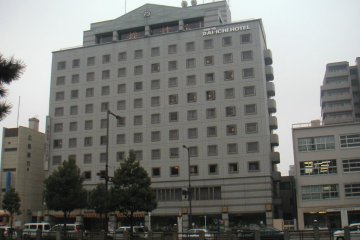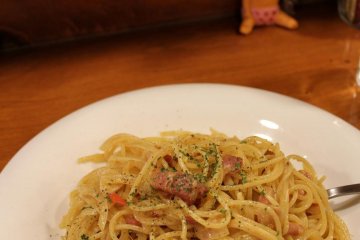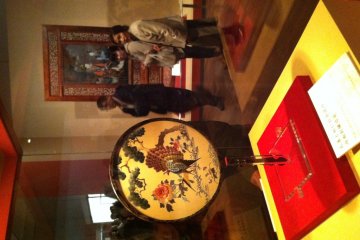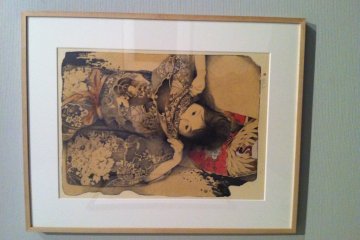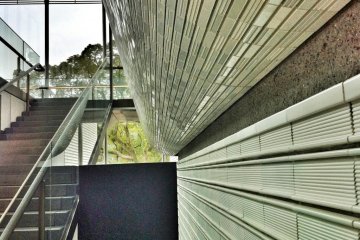The Museum of Art, Ehime, stands within the moat of Matsuyama Castle overlooking a wide area of lawn and trees. The large plate glass frontage of the museum reflects the castle on its hill and the stylish Prefectural Building nearby. The Museum of Art itself is an attractive modern building of concrete, tile and glass. Permanent exhibits are housed on the second floor in windowless rooms which appear from the outside as massive tiled bulges. They’re quite impressive and they harmonize well with the setting of the castle park.
The Museum of Art hosts frequent special exhibitions which draw large numbers of people, not only from Ehime but also from the surrounding prefectures. Memorable shows I’ve seen include a Salvador Dali exhibition and an exhibition on the artists behind Studio Ghibli. These are always major events with an almost exhausting selection of works filling two floors. Recently I went to an exhibition on the women of China’s imperial household, organized in part to promote goodwill between Japan and China. The vast array of exhibits included quantities of exquisitely embroidered silk dresses, elaborately decorated headgear and hairpins, a lacquered wooden bath, and a selection of fancy European-made clocks and toys. It was a very engrossing display.
Because these exhibitions enjoy a good reputation, a visit on a weekend means that you should be prepared for crowds. In practice this means shuffling slowly in a line past the displays and cabinets. It can get hot and there are a lot of old folk who still use some heavy-duty mothballs, to judge by the smell. Entry to these special exhibitions can be rather pricey. The Imperial China show cost 1,100 yen.
The Museum of Art also has a couple of permanent exhibitions. It has to be said that a lot of Japanese art simply isn’t very good, especially oil paintings. They tend to be derivative daubs that attempt to imitate the masters. But the paintings and scrolls in the second floor permanent exhibition are worth seeing. They’re imaginative, clever even, and the scrolls from the Edo period show the same sort of characterful and idiosyncratic penmanship that we see in modern manga. Some of the modern works are impressive too. What from a distance seems to be a series of abstract green and white stripes turns out on closer inspection to be a picture of a weir with a white heron vigorously hunting little fish that are leaping up it. You can see the permanent exhibition at any time for 300 yen. If you’re in the area, it would be a shame to miss it.




